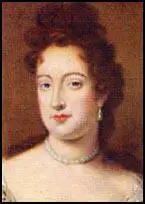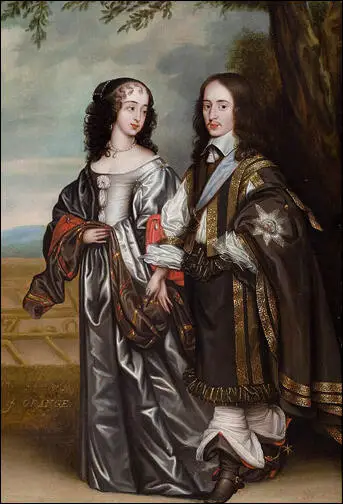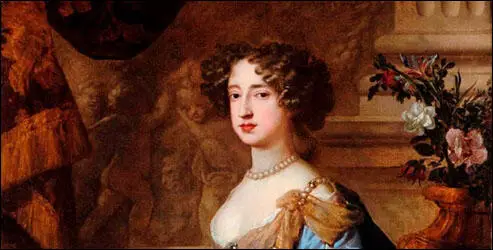Mary II

Mary, the daughter of James and Anne Hyde, was born at St. James's Palace, London, in 1662. Along with her sister Anne, she he was brought up as a Protestant and in 1677 married her cousin, William, Prince of Orange.
Charles II and his wife Catherine of Braganza did not have any children. There were two possible candidates to succeed Charles: James and James Scott, Duke of Monmouth, the king's eldest illegitimate son. Just before he died in February 1685, Charles admitted that he was a Catholic. He also announced that his brother James was to succeed him to the throne.
In June 1685, the Duke of Monmouth landed in England with a small army. As he was a Protestant he expected most of the population to support his claim to the throne, but people in England were unwilling to get involved in another Civil War. Monmouth was therefore easily defeated by the king's army.

After this victory James tried to place Catholic friends in positions of power. However, the Test Acts made it impossible for him to do this. When Parliament refused to change these laws, he ignored it and began appointing Catholics to senior positions in the army and the government.
James also announced that he intended to allow Catholics to have complete religious freedom in England. When the Archbishop of Canterbury and six other bishops objected to this, James gave instructions for them to be arrested and sent to the Tower of London.
Some members of the House of Commons sent messages to Holland inviting Mary and her husband, William, Prince of Orange to come to England. Mary and William were told that, as they were Protestants, they would have the support of Parliament if they attempted to overthrow James.

In November 1688, William and his Dutch army arrived in England. When the English army refused to accept the orders of their Catholic officers, James fled to France. As the overthrow of James had taken place without a violent Civil War, this event became known as the Glorious Revolution.
William and Mary were now appointed by Parliament as joint sovereigns. However, Parliament was determined that it would not have another monarch that ruled without its consent. The king and queen had to promise they would always obey laws made by Parliament. They also agreed that they would never raise money without Parliament's permission. So that they could not get their own way by the use of force, William and Mary were not allowed to keep control of their own army. In 1689 this agreement was confirmed by the passing of the Bill of Rights.
Mary died childless of smallpox in 1694.
Primary Sources
(1) Gilbert Burnet, History of My Own Time (1723)
Complaints came from all parts of England complaining about the violence used in the elections of 1685... The methods were so successful that James II said that there were only 40 members of parliament that he was unhappy with.
(2) On 30 June, 1688, some members of parliament wrote a joint letter to William of Orange.
Lord Russell has informed us that your Highness is ready and willing to give us assistance... your Highness may be assured that nineteen out of twenty... in the kingdom... desire change.

